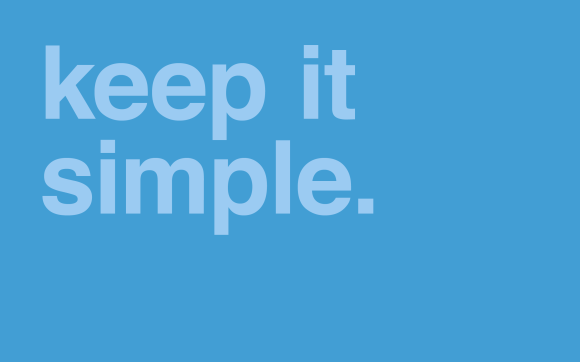
In our busy, complex personal and professional lives, filled with information coming from every imaginable source, simple things are appreciated. We all have a finite amount of time and attention to give each day.
Here’s how you can help…
- Write shorter paragraphs, using shorter sentences.
- Edit your email signature and dump all that legalese at the bottom (which no one ever reads anyway).
- If you own a restaurant, eliminate half of your menu items. You’ll make life easier for your diners, your staff and yourself.
- Include just one sales message in your marketing emails. (You don’t have to tell me everything about your organization.)
- Make sure images in your emails and on your website are as recognizable on a tiny phone screen as they are on your big desktop screen.
- Facebook and Instagram allow for long posts. Don’t do it! Most of us will just scroll on past the long ones. (Thanks, Twitter, for maintaining a maximum post length.)
- Place a time limit on videos you share. How long? Determine what your audience is comfortable with. (Consider that some of us may hesitate to watch a 7-minute video but will gladly watch 7 one-minute videos.)
- Be merciless when editing content. Three good paragraphs beats twelve mediocre paragraphs every time.
- Unless it’s your doctoral dissertation, don’t be afraid to use sentence fragments, when appropriate.
For a perfect example of the beauty and effectiveness of a simple approach, compare the layouts of Google.com with Bing.com and Yahoo.com. (Google has a 67.68% market share for searches; Bing, 13.27%; Yahoo, 8.14%.)
An almost infinite number of choices in many aspects of our life is wonderful. Unless we want the regular version, in the standard size, and it’s not in stock. Have you ever gone grocery shopping and found a dozen or more variations on the product you want, but not the particular version you want?
The great singer/songwriter Merle Haggard who died last week was once quoted as saying, “The most important thing in a song is simplicity.” Keep it simple.








